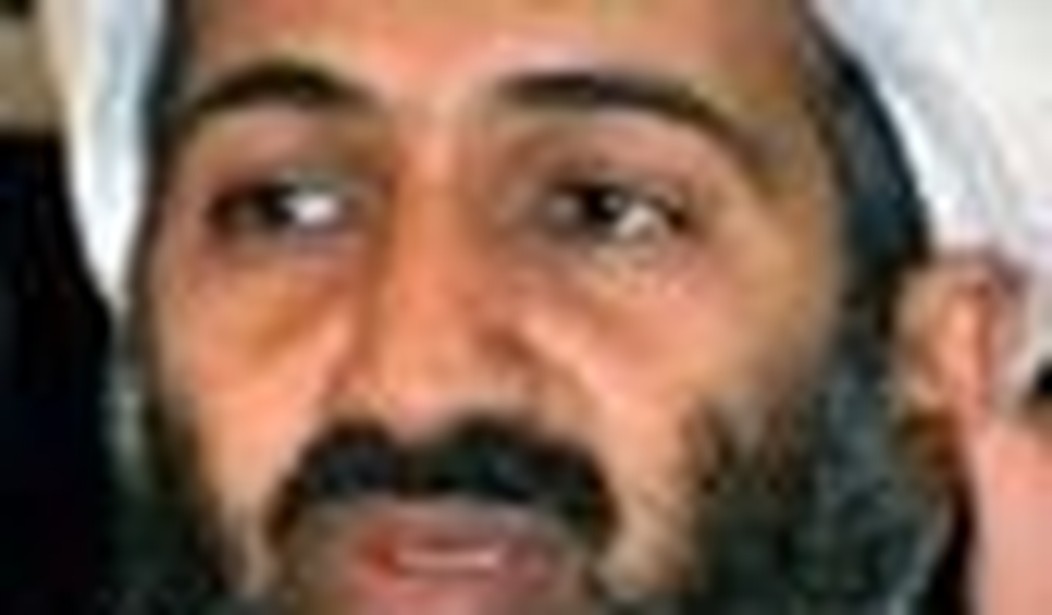Claims of the whereabouts of Osama bin Laden seem to be as common as sightings of David Duchovny at porn shops. It is tempting to dismiss all such accounts as hearsay and rumors, but current reports focus on three areas of the world as the most likely hideout for the globe’s most wanted man: Parachinar, Pakistan; Chitra, Pakistan; and most shockingly, the Islamic Republic of Iran.
While it is often argued bin Laden would never receive harbor on Iranian territory, this is the location most identified by eyewitness reports available to the public, allowing for a detailed chronology of his movement in Iran to be drawn, as I attempted to do in a comprehensive report last month. Stunning new evidence has come out substantiating such allegations, which should make those who adhere to the outdated “Iran would never work with Sunni radicals” theory stammer so much you’d think they were Ozzy Osbourne.
Alan Howell Parrot, the director of the Union for the Conservation of Raptors (UCR), is dedicated to protecting the falcons of the Middle East, which are used in hunting, a love shared by Osama bin Laden and the highest officials of the Gulf countries. His website, SaveTheFalcons.org, shows how al-Qaeda and other terrorists and criminals in the region are heavily involved in the illegal trade of the highly sought-after birds.
As revealed by Dr. Rachel Ehrenfeld at the Huffington Post, of all places, Parrot says that members of the UCR have met with bin Laden in Iran six times. These meetings occurred in Zahedan, which was identified by the government as the location of an al-Qaeda network in January; in a safe house north of Tehran, similar to the description provided by Iranian defectors; and in Mashhad, another location known to be long used by al-Qaeda to smuggle personnel in and out of Iran.
She writes that Parrot has been sending the information on the meetings to the government since November 2004, but no members of his staff that tracked and met with bin Laden were interviewed. Parrot also wrote a letter to the State Department on January 20 saying he had spoken with Iranian officials about the matter and “a negotiated and political (i.e., non-military) solution is available,” consisting of the transfer of bin Laden from Iranian custody to the Saudi minister of foreign affairs, a friend of Parrot’s. He received no reply.
Ken Timmerman, whom I consider to be a Luke Skywalker of journalism, has talked to Parrot and has the rest of the details. Through an informant, Parrot was able to arrange a meeting with a Tajik smuggler who reported befriending bin Laden after unintentionally meeting him in November 2004 near Baluchistan and meeting him five more times in Iran, the last being in October 2007. The smuggler met with Parrot in March 2008 and videotaped him, in disguise, for a documentary Parrot was making. The smuggler came with a security force that called him repeatedly throughout the interview, ready to charge in the moment he didn’t silence it after a few rings.
Timmerman also breaks the story on another intelligence failure worthy of a congressional investigation. The UCR learned in late 2006 that bin Laden was leaving his safe house near Tehran to go falcon hunting in northern Iran, where hundreds of thousands of acres of land had been closed off, even to regular Arab sheikh customers. U.S. intelligence, according to Timmerman, also had intercepted communications inside Iran confirming that someone of great importance was about to move from Tehran to Zahedan, where the hunting would take place.
UCR put together a team, which included former special forces operatives, to snatch bin Laden. They were threatened with arrest by FBI officials for violating the Neutrality Act and were forced to back off. The government itself didn’t act on the information after concluding it wasn’t “actionable.”
The New York Daily News, meanwhile, is reporting that the U.S. is “zeroing in” on the Chitral region of northwestern Pakistan, home to the Hindu Kush Mountains, as having been bin Laden’s location since 2006. Terrorism expert Rohan Gunaratna claims that captured al-Qaeda operatives have also identified this location, which has a rapidly growing presence of radical Islam. The government is also looking at the town of Karam near Chitral.
Chitral was also suspected of being bin Laden’s location based on an analysis of the trees seen in a 2003 videotape of bin Laden. The time it takes for bin Laden to produce and distribute audiotapes in response to major world events is said to match with this location as well.
The third location current reports focus on is Parachinar, Pakistan. A team of scientists from UCLA finished a ground-breaking scientific study that concluded that bin Laden is hiding in one of three walled compounds at this location, making it the most specific allegation to date. As impressive as the study is, using scientific terms that make me feel like I’m my mother trying to fit in at a rap concert, Iran is not mentioned once. It does not appear that the accounts described in my previous report were considered in the study. However, it is worth mentioning that Gary Berntsen, the commander of the CIA unit hunting bin Laden in Afghanistan after 9/11, has said that bin Laden is believed to have fled to this location on December 16, 2001.
Perhaps bin Laden travels between two or more of these locations, or perhaps he’s not at any of them, but the tantalizing evidence leads one to conclude that the search for bin Laden is not as futile as it seems, and it doesn’t seem the government is doing everything possible to get him. Timmerman’s story of the FBI warning the UCR team against a snatch operation in Iran, and, furthermore, the government not acting on the information provided by UCR, is proof that we cannot place hopes in the government’s competency and stated desire to do anything to get him.
Furthermore, with the UCLA study’s identification of the three compounds in Parachinar as bin Laden’s likeliest hiding places, there can be no excuse for why these locations have not been raided by the U.S. or Pakistani authorities. The most convenient location for the government is Chitral, which is perhaps why it seems government officials are most inclined to identify it as bin Laden’s refuge, given its nearly impenetrable terrain.
No matter what the case is, a clear trend is seen of non-governmental organizations and journalists developing some of the best sources and most compelling locations for bin Laden. It’s becoming quite possible that the world’s most wanted man will not be caught due to a carefully managed effort by the government, but by the diligent work of those outside of government.









Join the conversation as a VIP Member